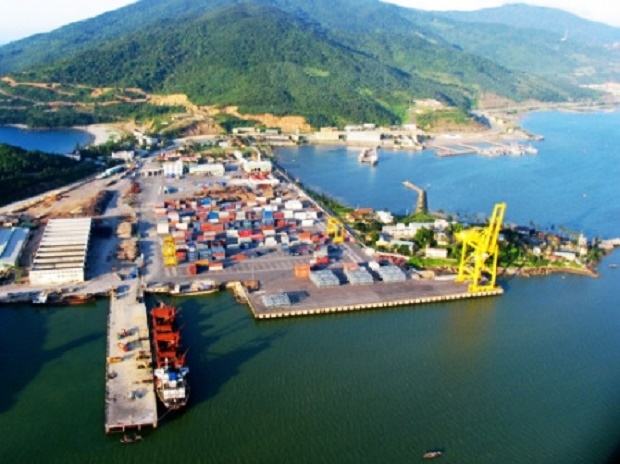Da Nang Port be developed into national-level general port
Approval has recently been given by the Vietnamese Ministry of Transport to implement a master plan for the development of seaports in the mid-central region towards 2020 with a vision towards 2030.
 |
| The Tien Sa Port |
Under the plan, seaports in Da Nang, and in the provinces of Quang Binh, Quang Tri, Thua Thien - Hue, Quang Nam, and Quang Ngai, will be further developed to ensure their smooth operation in the region, and to meet the increasing demands for cargo transportation between these localities, Laos and northeast Thailand via the East-West Economic Corridor.
The construction of these ports will be based on the build-operate-transfer (BOT) model and with public investment, whilst funds from the State budget will be mainly spent on developing the associated infrastructure.
Da Nang Port, in particular, will be developed into the main port for the central region and as a national-level general port.
The Port is targeting to reach a total capacity of between 11.1 million and 13.2 million tons by 2020, and to hit 27.9 million tons by 2030. Of this, container cargo is expected to reach between 0.5 million and 0.6 million TEUs by 2020, and between 1.5 million and 1.85 million TEUs by 2030.
To reach these targets, the city’s Tien Sa Port will be developed into a national-level general port and a container port. In particular, it will be expanded to handle 4,000 TEU container ships, between 30,000 and 50,000 DWT ships, and 225,000 GRT cruise ships.
By 2020, the 2nd phase of the Tien Sa Port expansion will be implemented to allow the port to handle between 8.6 million and 10 million tons of cargo per year. Between 2020 and 2030, the infrastructure will be upgraded to raise its cargo handling capacity to 12 million tons each year, and host between 300,000 and 370,000 tourists disembarking from cruise ships.
At the Tho Quang Port, greater efforts will be made to increasing its cargo handling capacity to between 1 million and 1.3 million tons per year by 2020, and between 1.4 million and 1.7 million tons per year by 2030.
In addition, a petroleum wharf will be built at the port to handle 10,000 DWT ships, whilst a liquefied petroleum gas station and the Song Thu - X50 wharf will also be created to receive 5,000 DWT ships.
As for Lien Chieu Port, the focus will be on raising its cargo handling capacity to between 0.7 million and 0.8 million tons per year by 2020, and between 0.9 million and 1.1 million tons per year by 2030.
Work on this port is expected to start soon after 2020, and a new international-standard terminal will be designated for handling 100,000-ton ships, and container ships featuring between 6,000 TEUs and 8,000 TEUs. Also, a floating fuel station will be built at the port to handle ships between 3,000 and 7,000 DWT.